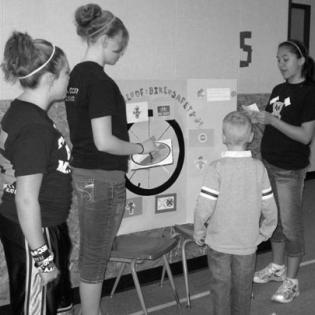We each have gifts we can use to give our lives purpose and make the world better. Using our gifts for the good of others can solve problems, if we take bold and selfless action. Even very young people are capable of the kind of selfless actions that create positive change.
Filter by subjects:
Filter by grades:
Filter by audience:
Filter by issue area:
Filter by content type:
Filter by resource type:
resource search
Children learn about caring and sharing through discussion of the book Martin's Big Words. The lesson introduces the "big" word philanthropy (giving time, talent, and treasure for the common good).
Young people learn about philanthropy through the book Uncle Willie and the Soup Kitchen and a visit from a nonprofit representative.
This lesson will help students learn the importance of helping people in need, and teach them to take an active role in helping others. It will allow the students to be aware of what kind of items and quality of items should be donated, how to communicate an idea to others by visual means...
The purpose of this lesson is to have the children identify the value of the gifts in the folktale "The Drum." They brainstorm gifts they have to give (time, talent, and treasure) and the value these gifts may have to others.
You love your philanthropy experience. How do you get more young people involved in YAC and their community? This guide gives tips and tools for introducing others to philanthropy at local schools and through service.
Children can find poetry everywhere: lyrics to songs, commercials, and on social media. They look for philanthropic themes found in poetry, then write poems with themes of community, generosity, and empathy.
Teens identify their roles and personal values, and analyze how their personal values and beliefs developed in connection to their community's values and beliefs. They discuss what decisions they can make through generosity and voice for the common good.
Learners research the examples of President Jimmy Carter's values and leadership over his lifetime. They identify his acts of generosity and commitment to the good of all and reflect on how this inspires others.
The activities described here are linked at the bottom of this page to help learners get to know their community and the resources there. They also help students take action to address a need and then reflect on the service-learning process.

